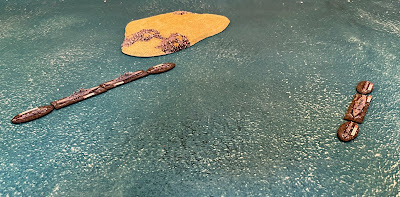This is Sam Mustafa's new WW2 naval game. It's his attempt to balance gruelling simulations and fantasy-like abstractions. I am generally a fan of his games and play Lasalle2 and Rommel mostly. However, for WW2 naval, I have been playing Victory at Sea without the awful Warlord models, and it's been OK without really grabbing me.
Shipping from the USA is a nightmare, so I downloaded the PDF version. You can get a printed version from Amazon, but after a few games, the QRF is enough with just the occasional reference to the laptop. So I will print off the main playing rules pages, 30 odd pages. Fleet lists, data cards for each ship class and markers are downloaded from Sam's Honour website. You can use any scale of ships - I use NavWar 1/3000 scale models.
I have only played the basic game so far. That is limited to surface actions without submarines and aircraft. You dice each turn to see who may choose either: Move First and Shoot First - OR - Move Second and Shoot Second. This is a clever mechanism; ideally, you would probably want to move second and shoot first.
Movement is very straightforward. There are three speeds for most ship types, and you can make one turn up to 90 degrees at any stage. Faster and slower speeds have a shooting impact, but there are times when you need to slow down to keep in contact with the enemy. Putting your ships in formation gives certain advantages, and I assume this is to encourage players to use actual naval tactics of the period. For those with smaller tables, there is, in effect, no table edge as you can scroll the table.
Shooting and torpedos have slightly different rules. However, the basic principle is applying difficulty factors (range, speed etc.) and dicing to hit with the weapons on the data cards. Then dicing for damage and the possibility of critical hits. Almost everything is marked on the data cards, so the table is clear. Damage is marked off in boxes until the ship is crippled or sunk.
 |
| Both squadrons are in line ahead formation, although heading in different directions. |
 |
| Both Turkish destroyers are sunk, but the Italians suffer damage as well. |
 |
| The Yavuz sinks one of the cruisers and cripples a destroyer. |


Thanks for the writeup. I'm seeing a bit of a buzz with these, so it's nice to know more.
ReplyDeleteNo problem. I think the buzz is justified.
Delete